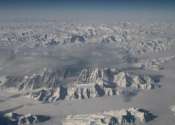Scientists track Greenland's ice melt with seismic waves
Researchers from MIT, Princeton University, and elsewhere have developed a new technique to monitor the seasonal changes in Greenland's ice sheet, using seismic vibrations generated by crashing ocean waves. The results, which ...








